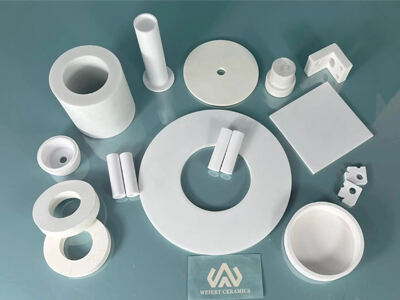Hence the name, Magnesia is a refractory raw material whose properties are explained below.BorderSizeInsulation Pros and Cons Regarding Materials Volume,...
Introduction
Magnesia (blk) - an industrial material able to withstand extreme temperatures without changing shape. It consists of magnesium and oxygen. Magnesia can be used in a wide range of applications because of its excellent heat and chemical resistance like Steel, Glass to production Cements. The article attempts to focus in the benefits, safety precautions, recent advancements/developments, correct methods of application, NDT techniques & quality parameters and applications as a Refractory material.
Benefits of Magnesia as Refractory Material
As a refractory material, magnesia has several characteristics that make it unique. Its high melting point, resistance to thermal shock,excellent chemical stability,,good insulation properties and very good at strength. These remarkable properties are what makes magnesia a good material for lining refractory materials of furnaces, kilns and other industrial processes that needs high heat resistance.
Innovation in Magnesia
Magnesia, on the other hand, has been refined over time in terms of manufacturing and use (to make it more effective or versatile). These advancements have included the addition of other materials such as alumina and zirconia, along with various additives, to provide enhanced resistance against corrosion, thermal shock, abrasion and chemical attacks. In addition to this, the high performance in magnesian refractories have contributed towards productivity and energy saving with better durability and also being low environmental impact products.
Safety in Using Magnesia
Magnesia is a material that has low toxicity, non-flammability and low reactivity; therefore it is generally harmless to humans. Prolonged exposure to magnesia dust can, in fact, be a respiratory hazard causing irritation and coughing as well as lung-damage ( 5 ). Therefore, the importance of good ventilation and wearing a dust mask while working with magnesia refractories is very important.
Application of Magnesium Refractory Materials
To achieve the full potential of magnesia as a refractory material, careful selection and preparation is essential. The selected magnesia should be of the desired physical and chemical behaviour, properly graded as well as efficiently compacted. Magnesia is a material that should be slowly brought up to temperature not only because it blocks heat but also thermal shocks very easily. It is necessary to entrust the installation of magnesia products to specialists, and from time to time they need a service inspection so that no fractures or leaks will appear.
Magnesia Refractory Materials Quality
Magnesia Refractory Materials Quality: The quality of magnesia refractories is also an important factor in determining its effectiveness and longevity. High purity magnesium must have a high chemical content, low impurity content and beeasy to melt with less pores. The production steps must be carefully controlled to maintain a consistent and uniform quality. Proper storage and handling should also be ensured to avoid contamination and spoilage.
Magensia Refracory Materials Application
There are a vast number of magnesia applications in industrial processes. In the steel and iron industry, magnesia refractory crucibles are used for melting process while ladles that will also consist of magnesium compounds undergo casting operation. Magnesia is used as a lining material in kilns during cement production. Besides this, magnesia refractories are used to maintain the lining of furnaces in which glass melting is carried out in the glass industry. Magnesia-lined crucibles can also be used in high temperature assays, such as atomic absorption spectroscopy.
Conclusion
In conclusion, magnesia is a widely used almost all refractory material and known for its excellent thermal resistance an alkali and chemical stability due to which it can be replaced easily at every opportunity in several industrial applications. Prior knowledge of the benefits, protocols for safety measures and systems integration, new process discovery potential as well as implementation measurement guidelines represents a pre-requisite when choosing or using magnesia. In industrial application of magnesia refractories, compliance with the rules and regulations; as well as standards on how they should be transported or installed are essential steps for maintaining their full functionality during long term use without risk.

 EN
EN
 AR
AR
 HR
HR
 CS
CS
 DA
DA
 NL
NL
 FI
FI
 FR
FR
 DE
DE
 EL
EL
 HI
HI
 IT
IT
 JA
JA
 KO
KO
 NO
NO
 PL
PL
 PT
PT
 RO
RO
 RU
RU
 ES
ES
 SV
SV
 CA
CA
 TL
TL
 IW
IW
 ID
ID
 LV
LV
 LT
LT
 SR
SR
 SK
SK
 SL
SL
 UK
UK
 VI
VI
 TH
TH
 TR
TR
 FA
FA
 AF
AF
 MS
MS
 GA
GA

